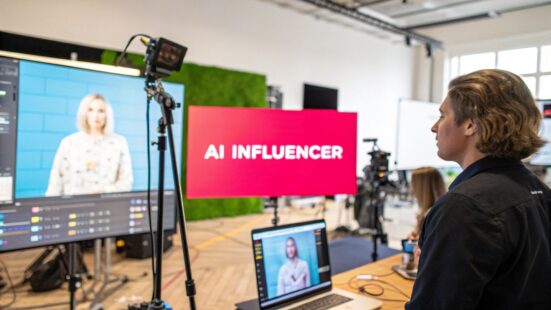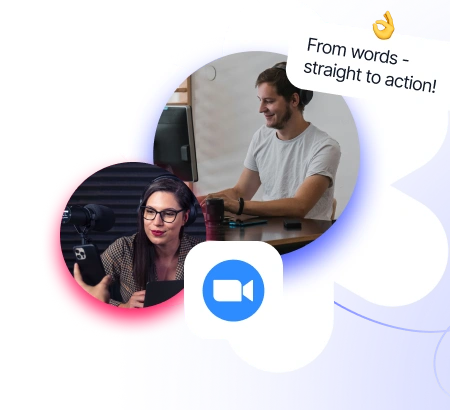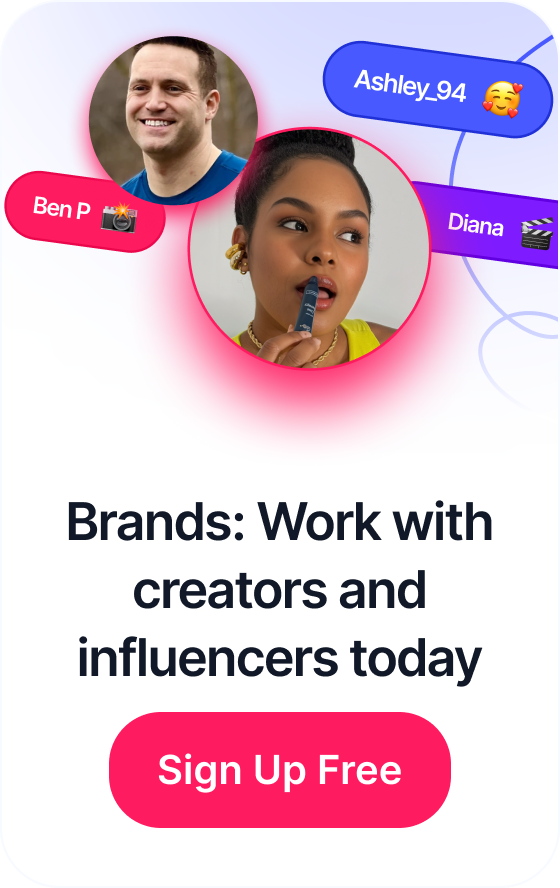 Granny Spills: The AI Grandma Who Went Viral… But Can’t Sell Your Product
Granny Spills: The AI Grandma Who Went Viral… But Can’t Sell Your Product
Table of Contents
Understanding AI Influencers: The New Digital Reality
Imagine a spokesperson who’s always on, never embroiled in controversy, and can be everywhere at once. That’s the promise of AI influencers. These aren’t just fancy computer graphics; they’re the next evolution of digital marketing personas. AI influencers blend cutting-edge tech with smart storytelling to create virtual personalities that truly connect with audiences. Let’s explore what makes these digital personalities tick and look at real-world examples of AI influencers who’ve built huge followings and generated serious revenue for brands.

The infographic above shows the key functions of AI influencers, highlighting content creation, audience engagement, and performance analysis as vital parts of their operation. As you can see, an AI influencer’s success depends on how these three core functions work together. Content creation fuels audience engagement, which provides data for performance analysis, leading to constant tweaking and improvement.
This new way of interacting online is changing how brands connect with their audiences. To see how well your AI influencer marketing strategies are working, concentrate on getting the best possible return on your investment. The resource Influencer Marketing ROI provides valuable information on achieving this. Plus, as AI influencers become more realistic and interactive, they’re becoming even more engaging. This brings up some important ethical questions for brands to consider. As AI technology progresses, these virtual personas are getting incredibly sophisticated, blurring the lines between the digital and the human. Learn more about this evolving landscape here.
What Defines an AI Influencer?
Unlike human influencers, AI influencers are entirely digital creations. They’re built using a mix of technologies, including computer-generated imagery (CGI), artificial intelligence (AI), and natural language processing (NLP). This allows them to create content, chat with followers, and even team up with brands, just like their human counterparts.
Decoding the Appeal of Virtual Personalities
AI influencers are attractive to brands because they offer a level of control and consistency that’s hard to get with human influencers. They’re available 24/7, immune to personal scandals, and can be perfectly molded to reflect a brand’s values and message. For instance, an AI influencer promoting a fitness brand can constantly pump out workout motivation and product endorsements without ever getting tired or straying from the brand’s key message.
Distinguishing Authentic Engagement From Marketing Gimmick
The secret to successful AI influencer marketing is building real connections with the audience. This means steering clear of overly promotional content and focusing on developing a genuine virtual persona that resonates with the target audience. Think of it like crafting a fictional character – a compelling backstory, consistent personality, and engaging content are crucial for making the character believable and getting the audience invested. This genuine approach is what separates successful AI influencers from obvious marketing gimmicks. It requires a delicate balance: promoting the brand’s message while maintaining the illusion of an independent, engaging personality. This careful crafting allows for meaningful interactions with the audience, building connections that boost engagement and brand loyalty.
To further understand the differences between AI and human influencers, take a look at the following table:
AI Influencers vs Traditional Influencers: Key Differences
A comprehensive comparison showing the distinct characteristics, capabilities, and limitations of AI influencers compared to human influencers
| Aspect | AI Influencers | Traditional Influencers | Brand Impact |
|---|---|---|---|
| Availability | 24/7 | Limited by personal schedules | Increased brand visibility and engagement due to constant availability |
| Control | Full brand control over messaging and actions | Limited control, potential for deviations from brand message | Ensures consistent brand messaging and reduces risk of reputational damage |
| Cost | Potentially lower long-term costs | Higher costs associated with sponsorships, fees, and travel | Potentially higher ROI due to lower operational costs |
| Authenticity | Requires careful crafting to appear genuine | Potential for more authentic connections based on personal experiences | Can impact audience trust if not perceived as authentic |
| Creativity | Limited by programming, although advancements are being made | Higher potential for creative and original content | Can both enhance and limit creativity based on the brand’s approach |
| Engagement | Can interact with audiences through programmed responses | Can offer more nuanced and empathetic interactions | Level of engagement depends on the quality of AI programming and the human influencer’s personality |
| Scalability | Can be easily replicated and deployed across multiple platforms | Limited scalability due to time constraints and individual reach | Offers greater potential for reaching wider audiences simultaneously |
This table summarizes the core differences between AI and traditional influencers. While AI offers control and scalability, traditional influencers can offer more nuanced and potentially authentic engagement. The best choice for a brand depends on its specific marketing goals and target audience.
The Tech Magic Behind Virtual Personalities

We’ve seen how AI influencers are changing the marketing game. But how does code transform into a compelling personality that can sell products, connect with audiences, and even inspire action? The technology behind these virtual beings is a fascinating blend of several key components.
The Engine: Machine Learning and AI
At the heart of every AI influencer is machine learning, a form of AI. Think of these algorithms as incredibly efficient learners. They absorb tons of data, from trending topics and audience demographics to the nuances of past marketing campaigns. This data helps the AI understand what type of content clicks with people, what language creates a connection, and the best ways to engage a target audience. Imagine a chef learning from thousands of recipes – eventually, they’ll start creating their own unique dishes. That’s similar to how machine learning works for AI influencers.
The Canvas: Computer Graphics
The way an AI influencer looks is critical. Advanced computer graphics bring these virtual personalities to life, creating visuals that range from photorealistic to stylized. It’s a form of digital art, where every detail, from hairstyle to clothing, is carefully chosen to appeal to a specific audience and reflect the desired brand image.
The Voice: Natural Language Processing (NLP)
Giving an AI influencer a voice, both literally and figuratively, relies on Natural Language Processing (NLP). This technology enables them to have conversations that feel natural and engaging. They can answer questions, respond to comments, and even create original content. It’s not about pre-programmed responses anymore. It’s about a dynamic back-and-forth that feels remarkably human.
The Evolution: Learning and Adapting
This is where things get really interesting. AI influencers aren’t static. They learn and adapt, developing unique communication styles based on their interactions. They can analyze trending topics, adjust their tone for different audiences, and even develop what seem like genuine personality quirks. This constant evolution is key to their appeal. Studies show that by 2025, 80% of content recommendations and 71% of images will be AI-powered. For more on the growing influence of AI in social media, check out this article. The beauty of AI influencers is that they offer this adaptability while also maintaining the consistency and control that brands need. This blend of flexibility and control makes them powerful marketing tools.
Why Smart Brands Are Going Virtual
The rise of AI influencers isn’t just a passing fad; it’s a fundamental shift in how brands connect with their audience. Think of it like having a brand ambassador who’s always on, always on message, and can launch campaigns across the globe simultaneously. That’s the power of AI influencers. They offer unparalleled brand alignment, constant availability, and seamless scalability, solving many of the challenges that come with traditional influencer marketing. Forget late-night scandals or mid-campaign contract disputes; AI influencers bring stability and predictability to your brand’s voice.
Control, Consistency, and Scalability: The AI Advantage
AI influencers offer brands a level of control over messaging and image that’s simply impossible with human influencers. Think of it like a perfectly tuned instrument; every word and action is carefully crafted to resonate with your brand values. This guarantees consistent communication across every platform and minimizes the risk of reputational damage from unexpected influencer behavior. Plus, AI influencers can scale globally without the logistical headaches of travel or time zones. Launching a product simultaneously in Tokyo, London, and New York with a consistent brand voice is no longer a fantasy, it’s a reality.
Imagine a fashion brand launching a new collection. With AI influencers, they can create custom content for each region, reflecting cultural nuances and releasing it at the perfect local time, all without the need for complex photoshoots and travel arrangements. This level of precision and efficiency just isn’t achievable with traditional influencers. The result is a truly global reach with laser-focused targeting.
Beyond Convenience: Strategic Advantages
AI influencers aren’t just convenient; they offer unique strategic benefits. They allow brands to experiment with different marketing messages and instantly analyze their effectiveness. This creates a real-time feedback loop, providing valuable data to improve future campaigns and maximize ROI. The creation of these AI personas relies heavily on advanced data analysis to understand audience preferences and current trends. AI-driven analytics are key to this process. Furthermore, AI influencers can easily reach niche audiences with highly personalized content, something that can be difficult and expensive with traditional influencers. They can be designed to specifically appeal to certain demographics or interest groups, making targeted campaigns far more impactful.
The global influencer marketing industry is expected to hit $22.2 billion by 2025, with a 93% year-over-year growth in user-generated content (UGC) creators. AI plays a vital role in this expansion, streamlining workflows through automation. Learn more about these trends here.
Integrating AI Influencers Into Your Marketing Ecosystem
Innovative companies are integrating AI influencers into their overall marketing strategies, creating powerful synergies that boost their digital presence. They use these virtual personas to complement existing marketing efforts, bridging the gap between traditional and digital channels. For brands interested in measuring the effectiveness of their campaigns, understanding influencer marketing ROI is crucial. This integrated approach allows brands to craft a cohesive brand narrative and reach a broader audience with consistent messaging. It’s not about replacing human connection; it’s about adding a powerful new layer to brand storytelling.
To better illustrate the advantages of incorporating AI influencers, let’s look at a few examples across different industries:
The following table illustrates how AI influencers can provide unique benefits across various industries and brand types.
| Industry | Primary Benefits | Use Cases | ROI Factors |
|---|---|---|---|
| Fashion | 24/7 availability, global reach, personalized styling advice | Virtual runway shows, product demos, styling tutorials | Increased engagement, improved brand awareness, higher conversion rates |
| Gaming | Interactive gameplay, personalized coaching, community building | In-game characters, esports commentators, live stream hosts | Enhanced player experience, increased game sales, expanded community reach |
| Healthcare | Accessible health information, personalized support, consistent messaging | Virtual health assistants, patient educators, product spokespersons | Improved patient education, increased access to care, enhanced brand trust |
| Finance | Data-driven insights, personalized financial advice, 24/7 customer support | Virtual financial advisors, investment guides, market analysts | Improved customer service, increased lead generation, higher conversion rates |
This table provides a snapshot of the diverse ways AI influencers can be employed. Each industry can leverage these virtual personas to address specific needs and achieve measurable results. The key is to tailor the AI influencer’s persona and activities to align with the brand’s target audience and marketing goals.
AI Influencer Success Stories That Changed The Game
The world of AI influencers is fascinating. Think of them not as lines of code, but as carefully constructed personalities, engaging with real people and making a real impact. They’re brand ambassadors, storytellers, and even virtual friends. Let’s dive into some success stories that showcase the power of a well-executed AI influencer strategy.

This screenshot from Wikipedia gives you a glimpse of the diverse world of virtual influencers. From their appearances to the platforms they use, it’s clear these digital personalities are becoming a regular part of the social media landscape.
Lil Miquela: The Original Virtual It Girl
If you’ve heard of any AI influencer, it’s probably Lil Miquela. With millions of followers, she interacts with fans, partners with big fashion brands like Calvin Klein and Prada, and has even released her own music. Her success comes from her carefully constructed persona, blurring the lines between the digital and the real. Miquela’s collaborations show how AI influencers can become major players in marketing.
Virtual Influencers in Luxury: Embodying Brand Values
Luxury brands are also getting in on the action. Imagine a brand ambassador who always reflects the brand’s values, never has a bad day, and delivers perfectly consistent messaging. That’s the power of an AI influencer. This precise control is especially valuable in the luxury market, where a pristine brand image is everything.
Beyond Fashion: AI Influencers Across Industries
AI influencers aren’t just about fashion. Picture a virtual fitness coach providing custom workout plans and motivation. Or a travel blogger showcasing stunning CGI landscapes, capturing shots impossible for human photographers. Even a tech-savvy AI persona explaining complex gadgets simply can bridge the gap between technology and consumer understanding. The possibilities are vast.
Learning From Success and Failure
Of course, not every AI influencer campaign is a home run. Some fall flat, feeling gimmicky or fake. Learning from both successes and failures is crucial. What’s the secret to a truly engaging virtual influencer? It often comes down to authenticity and genuine connection with the audience. An AI influencer constantly pushing products will likely feel less relatable than one who shares stories and engages in real conversations.
Actionable Insights for Your Brand
These success stories offer valuable lessons for brands exploring AI influencer marketing. Consider these key takeaways:
- Strategic Persona Development: Craft a virtual personality that reflects your brand and resonates with your target audience.
- Authentic Engagement: Create content that genuinely connects with your audience. Avoid overly promotional or fake interactions.
- Measurable Results: Track metrics like engagement and conversions to understand your campaign’s return on investment.
- Transparency and Disclosure: Be open about the virtual nature of your influencer to build trust with your audience.
By learning from these real-world examples, brands can create AI influencer strategies that are effective and ethical. These virtual personalities can become more than just marketing tools – they can be valuable assets, enhancing storytelling, connecting with audiences, and driving real business results.
Building Your AI Influencer From Concept To Launch
Ready to create your own virtual brand ambassador? Imagine crafting a character for a movie. You’re not just designing their look, but their entire personality, a persona that truly embodies your brand. This section walks you through building your AI influencer, from initial brainstorming to launch and beyond.
Defining Your Virtual Persona
First, some key questions. What personality traits best reflect your brand? How should your AI influencer communicate to truly resonate with your target audience? What visual style will make them memorable and relatable? For inspiration, think about successful influencers in the real world. Instagram Influencer Success Stories offer some great insights.
Let’s say your brand is playful and energetic. Your AI influencer should mirror that, perhaps using humor and bright visuals in their content. On the other hand, a luxury brand might want an AI influencer with a more sophisticated and elegant style. This initial stage is all about creating a detailed profile, complete with a backstory, values, and a distinct communication style.
Crafting a Unique Voice and Content Strategy
With their personality defined, it’s time to develop their unique voice. This includes their tone, language, and overall communication style, which needs to be consistent across all platforms and content formats. Think of it like creating content guidelines to ensure every interaction stays true to their character and your brand.
Consider your target audience’s preferences. Do they enjoy short, snappy videos, or do they prefer longer, more in-depth discussions? What type of humor, if any, works best for them? These questions will shape your AI influencer’s content strategy, covering everything from the types of content they create to the platforms they use.
Budget, Timeline, and Team Dynamics
Building an AI influencer involves several key stages: design, development, content creation, and ongoing management. Each stage requires specific skills and resources. Think carefully about your budget and timeline. Creating a high-quality AI influencer takes time and investment.
It also requires a skilled team, including AI developers, content creators, and social media managers. Open communication and collaboration are crucial. Thinking about how traditional influencers work with brands can be helpful. Check out resources on influencer relationship management for guidance. Effective teamwork will smooth the entire process, from design to launch, ensuring a cohesive and effective AI influencer strategy.
Measuring Success: Key Metrics and Tracking
Launching your AI influencer is just the first step. Tracking engagement rates, reach, and conversion rates is essential for measuring success and fine-tuning your approach. These metrics show how well your AI influencer connects with the audience and drives business results.
Regularly monitoring these metrics allows you to adapt your content strategy and make sure your AI influencer achieves its marketing goals. This ongoing analysis is key for optimizing performance and maximizing the impact of your virtual brand ambassador. It also helps you stay ahead in the ever-changing world of AI and influencer marketing. Consistent evaluation ensures your AI influencer remains a valuable asset, adapting to shifts in the digital world and delivering impactful results.
Navigating The Ethics of Virtual Influence
AI influencers occupy a strange new world somewhere between entertainment and advertising. It’s a world that comes with its own unique set of ethical challenges, many of which brands are still trying to figure out. For instance, how open should a brand be about the fact their influencer isn’t human? And where do we draw the line between imaginative storytelling and actually misleading people? These aren’t just abstract questions. They have very real implications for consumer trust and following advertising regulations. 
Transparency: The Cornerstone of Trust
Imagine two different scenarios. In the first, a brand is completely upfront about their AI influencer, making it a core part of their marketing. In the second, a brand tries to pass off their AI influencer as a real person. Eventually, people figure it out, and the backlash is swift.
This highlights just how crucial transparency is. Building trust means being honest about the virtual nature of your AI influencer from the get-go. It’s a way of building authentic connections with your audience and showing them respect.
Some brands fully embrace the artificiality of their AI influencers, making it part of their unique identity. This can create buzz and get people talking. But other brands have learned the hard way that trying to hide the truth can severely damage their reputation and erode consumer confidence.
Disclosure Best Practices: Building an Ethical Framework
So, how can brands be transparent about their AI influencers? Here are some key things to consider:
- Clear and Concise Language: Tell people straight up that the influencer is AI-generated. Don’t use vague language that might confuse them.
- Consistent Messaging: Be transparent across all platforms and campaigns. Mixed messages only create confusion and distrust.
- Early Disclosure: Let people know about your influencer’s virtual identity early on. Don’t wait for them to find out on their own.
For example, a simple statement in the influencer’s bio, like “Virtual Influencer brought to you by [Brand Name]”, sets clear expectations right away.
Managing Consumer Expectations: Honesty and Authenticity
Transparency is the first step. The next is managing what people expect. Audiences are becoming increasingly aware of AI influencers. Some might be intrigued, while others might be skeptical. Honesty about your influencer’s virtual status goes a long way in building trust and managing those expectations.
Even with an artificial influencer, creating content that feels real is key. Focus on providing value and building a connection with your audience, not on tricks or misleading tactics. AI influencers can offer great content, insights, and entertainment, but they shouldn’t be used to manipulate consumers.
Evolving Attitudes: Staying Ahead of the Curve
How people feel about AI influencers is always changing. What’s okay today might not be okay tomorrow. Brands need to stay on top of these shifting attitudes and adapt their strategies accordingly. This means keeping an open dialogue with consumers, industry experts, and regulatory bodies.
The point isn’t to fool anyone. It’s about creating engaging and transparent experiences that audiences actually want because they find value and entertainment in them. By prioritizing ethical practices, brands can help build a future for AI influencer marketing that’s built on trust, transparency, and real connection.
The Future of AI Influence and Your Brand Strategy
The AI influencer landscape is constantly shifting. Brands that anticipate the next wave will have a distinct advantage. We’re moving toward a future where AI influencers can engage in real-time conversations, adapt their personalities to individual interactions, and generate personalized content at an impressive scale. Imagine these virtual influencers attending live events through augmented reality, responding to comments with contextual awareness, or even collaborating with human influencers.
Emerging Trends and Technologies Shaping Virtual Influence
Several key trends are shaping the future of AI influence:
- Enhanced Interactivity: Advances in Natural Language Processing (NLP) are making AI influencers more conversational. Think of it like having a chat with a friend – they can understand the nuances of your comments and respond in a meaningful way, building stronger connections with followers.
- Personalized Content at Scale: AI can create unique content tailored to individual user preferences. This level of personalization is like having a personal stylist or advisor – keeping audiences engaged with content that truly resonates with them.
- Integration with AR/VR: Picture an AI influencer appearing in your living room via augmented reality! This immersive experience opens up completely new avenues for brands to interact with consumers, bringing the digital world into the physical realm.
- Human-AI Collaboration: The future isn’t about AI replacing human influencers, but about combining their strengths. Think of it as a team effort, where human creativity and AI’s data-driven capabilities work in tandem.
These advancements will significantly change how brands connect with their audience. You might find these influencer marketing best practices helpful in understanding effective strategies. Staying ahead of these trends will be key to success.
Positioning Your Brand for Future Opportunities
Navigating this evolving space requires a proactive approach:
- Scaling Your AI Influencer Program: As AI technology progresses, brands can manage multiple virtual influencers, each focused on specific demographics or niches. This opens doors to reaching a broader audience and creating more targeted campaigns.
- Integrating Virtual and Human Talent: Combining AI influencers with human creators can create a powerful synergy. Think of it as a duet, where each performer brings unique strengths to the performance, creating a more compelling experience.
- Staying Ahead of Regulatory Changes: As AI influence grows, expect new regulations and ethical guidelines. Staying informed is crucial to avoid potential legal and reputational issues – it’s like keeping up with industry best practices to ensure responsible and sustainable growth.
For instance, a beauty brand might use an AI influencer to offer personalized skincare routines, while partnering with a human makeup artist to showcase application techniques. This blended approach provides both personalized advice and practical demonstration.
Maintaining Authenticity and Value in an AI-Driven World
Perhaps the most crucial element is maintaining authenticity. As AI becomes more advanced, it’ll become more challenging to differentiate between virtual and human influencers. This makes transparency and honesty paramount for building real trust with your audience.
Here are some ways to maintain authenticity:
- Open Disclosure: Be upfront about the virtual nature of your influencer. Transparency fosters trust and avoids potential negative reactions – it’s like introducing a new team member and clearly explaining their role.
- Value-Driven Content: Focus on creating content that genuinely benefits your audience. Whether it’s entertainment, education, or inspiration, providing real value is key to building long-term engagement.
- Community Building: Encourage interaction and build a community around your AI influencer. This fosters a more genuine and engaging experience, creating a space for meaningful connection and interaction.
By focusing on these core values, brands can ensure their AI influencer marketing stays relevant and trustworthy as the technology evolves. This creates stronger, lasting relationships with consumers, even as the digital landscape changes.
Ready to take your creator marketing to the next level? JoinBrands offers an all-in-one platform connecting brands with a vast network of creators, including AI influencers. Streamline your campaigns, expand your social presence, and boost sales with JoinBrands. Explore the platform and learn how JoinBrands can help you reach your marketing goals.








